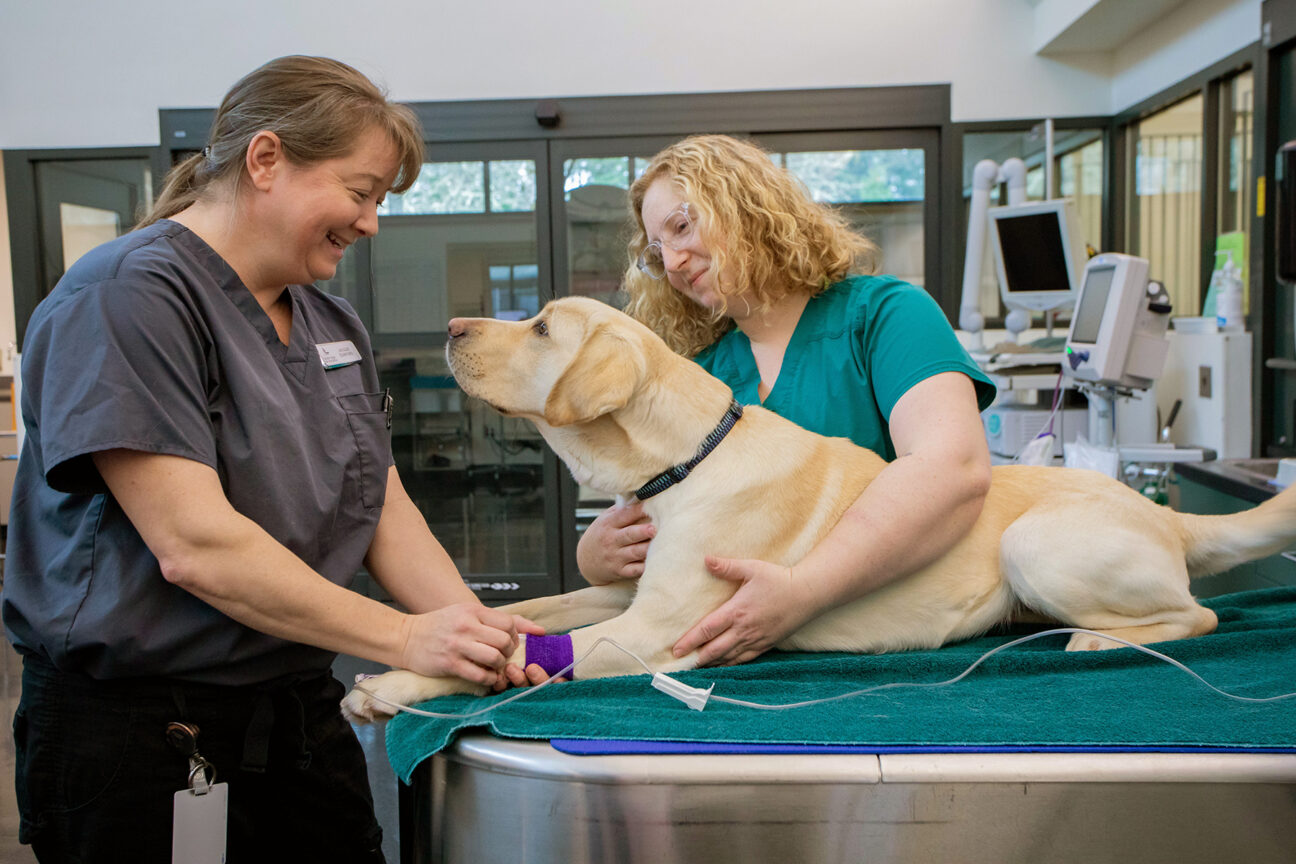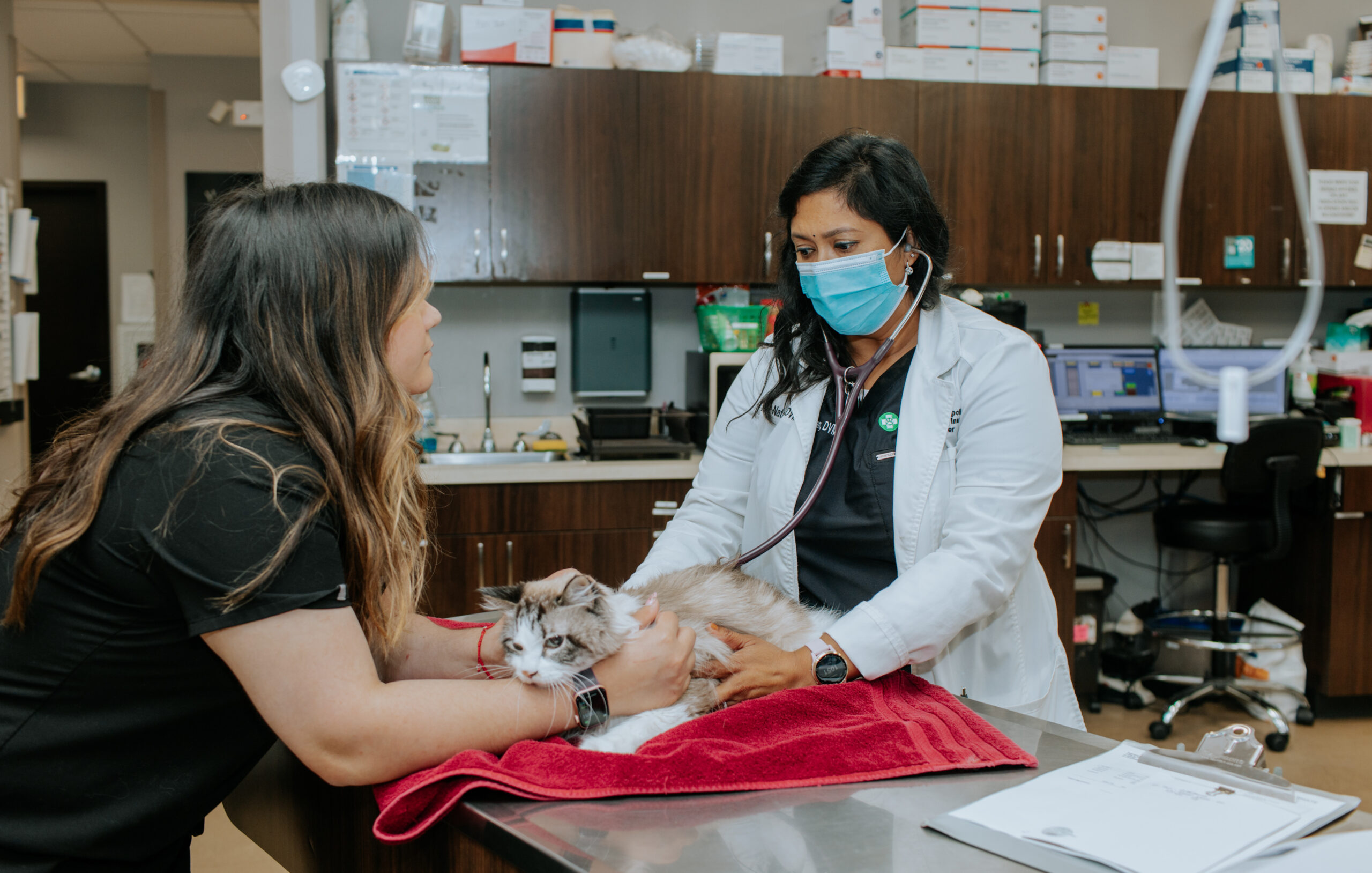Post-Op Recovery Guide After Your Dog’s tplo surgery
Post-Op Recovery Guide After Your Dog’s tplo surgery
Blog Article
Why Pet Rehabilitation Is Important: the Perks of Vet Services for Your Pet's Healing
Animal recovery is a necessary element of recovery for animals encountering injuries or impairments. Vet solutions offer critical assistance through tailored rehab plans that attend to private demands. These strategies frequently include discomfort monitoring, physical therapy, and dietary assistance. Recognizing the different aspects of animal rehabilitation can illuminate its significance in enhancing recovery end results. What particular advantages do these solutions use, and how can they change a family pet's recovery journey?
Comprehending Pet Recovery
Animal rehab includes a variety of therapeutic methods targeted at recovering the wellness and functionality of injured or impaired pets. This field incorporates different methods, including physical treatment, hydrotherapy, and occupational treatment, tailored to meet the specific needs of each animal. Rehab experts analyze an animal's problem, creating personalized treatment plans that may include workouts to reinforce muscle mass, improve mobility, and enhance overall wellness. The process not only concentrates on physical recovery yet also addresses emotional and behavioral elements. Pets typically experience tension and anxiousness following an injury, making mental wellness factors to consider essential in recovery. By producing a supportive environment, specialists can assist pets regain their self-confidence and adapt to their brand-new circumstances. With routine sessions, pets can experience substantial renovations, inevitably leading to a better quality of life. In general, understanding animal rehabilitation highlights its importance in promoting recovery and improving the bond in between family pets and their owners.
The Duty of Pain Management in Healing
How vital works pain administration in the recovery of hurt pets? It plays a crucial duty in facilitating recovery and improving the total health of pet dogs. Appropriate pain monitoring not just reduces discomfort but also advertises flexibility, allowing pets to take part in recovery tasks essential for recovery. When pain is properly handled, animals tend to react favorably to treatment, causing quicker recovery outcomes.Veterinarians utilize different methods to assess and resolve discomfort, including medicines, acupuncture, and alternate therapies. By customizing pain monitoring techniques to the private demands of each pet, veterinarians can assure that animals remain tranquil and participating throughout their healing journey. Additionally, decreasing discomfort helps in reducing stress and anxiety, which can prevent recovery and lengthen healing times. To sum up, effective discomfort management is essential for improving the recovery process and improving the lifestyle for damaged pets.
Physical Therapy Strategies for Family Pets
Numerous physical therapy strategies are offered to help in the rehabilitation of animals recovering from injuries or surgeries (tplo surgery). These methods can enhance wheelchair, alleviate discomfort, and promote healing. Restorative workouts, as an example, assistance reinforce muscular tissues and enhance joint feature, permitting pet dogs to regain their physical abilities gradually. Manual therapy, that includes massage and mobilization, can alleviate tension and improve flow, adding to a faster recovery.Other strategies such as passive variety of activity exercises encourage joint adaptability and lower rigidity. Furthermore, electric stimulation therapy might be utilized to stimulate nerves and muscles, advertising healing and discomfort relief.Veterinary professionals commonly customize these methods to every family pet's details requirements, making certain a thorough recovery plan. By carrying out these physical treatment techniques, animals can experience better quality of life and a more successful healing from their disorders. The combination of these practices right into recovery programs is necessary for excellent recovery results
Advantages of Hydrotherapy for Rehab
Hydrotherapy provides substantial advantages in pet recovery, specifically in boosting wheelchair. This water-based treatment promotes discomfort relief while offering convenience to harmed or recovering pets. Additionally, it assists in strength-building workouts that add to total physical recuperation.
Enhanced Mobility Renovation
As animals recoup from injuries or surgical procedures, improved wheelchair usually ends up being a primary goal of their rehab. Hydrotherapy offers as a useful tool in accomplishing this purpose. With water-based exercises, animals can engage in low-impact movements that assist in joint flexibility and reinforce muscles without the stress of weight-bearing activities. The buoyancy of water supports their bodies, permitting raised range of movement and wheelchair renovation. Additionally, hydrotherapy encourages far better balance and sychronisation, which are important for bring back regular movement patterns. Normal sessions can bring about considerable progress in a pet's physical capabilities, inevitably boosting their high quality of life. This strategy not only aids in recovery but likewise advertises an extra active and fulfilling way of living post-rehabilitation.
Discomfort Relief and Comfort

Remedy for pain is an essential aspect of pet rehabilitation, and hydrotherapy significantly adds to this procedure. By making use of water's buoyancy, hydrotherapy decreases joint tension and relieves pain throughout activity. This therapeutic strategy offers a calming environment where pet dogs can take part in gentle workouts without the full weight of their bodies impacting their recuperation. The warm water boosts blood circulation, promoting healing while likewise encouraging relaxation. Furthermore, hydrotherapy sessions can be tailored to satisfy the details demands of the animal, making sure excellent comfort. As pet dogs experience lowered discomfort and raised convenience degrees, their overall desire to join recovery tasks usually boosts, bring about an extra reliable recuperation trip. Subsequently, hydrotherapy works as an essential tool in boosting pain alleviation and convenience during recovery.
Strength Building Exercises
Strength-building exercises play an essential role in the rehabilitation procedure, with hydrotherapy offering one-of-a-kind benefits. This form of therapy uses water resistance to improve muscle strength without putting too much strain on the joints. The buoyancy of water supports the pet dog's weight, permitting safer movement and enhanced variety of movement. Furthermore, hydrotherapy can boost cardiovascular health and wellness and advertise general fitness, aiding in much faster recovery from injuries or surgeries. The regulated environment also lessens the threat of reinjury, making it an ideal option for pet dogs needing rehab. Routine hydrotherapy sessions can cause recognizable renovations in movement, toughness, and endurance, eventually enhancing the pet's top quality of life and capacity to go back to normal activities.
Relevance of Custom-made Rehab Strategies
Custom-made rehabilitation strategies are necessary for resolving the unique requirements of each animal, guaranteeing individualized therapy approaches. These strategies enable for effective progress monitoring and required adjustments, promoting excellent recuperation results. Furthermore, an alternative strategy can improve the total well-being of the pet, promoting a much more thorough rehab experience.
Individualized Treatment Approaches
While numerous recovery programs take on a one-size-fits-all approach, the unique demands of each animal require customized therapy plans for optimal recovery. Custom-made rehab strategies consider numerous aspects, including the pet's varieties, age, case history, and particular injuries or conditions. By customizing treatments, vets can address each pet dog's special obstacles, maximizing the effectiveness of the rehab process. Individualized plans might incorporate different methods such as physical treatment, hydrotherapy, and restorative workouts, making certain that the therapy straightens with the animal's abilities and progression. Furthermore, tailored approaches foster a more powerful bond in between the pet dog and the caretaker, advertising a much more interesting and helpful recovery atmosphere. Ultimately, individualized treatment is important for achieving ideal possible end results in animal rehab.
Progression Monitoring and Adjustments

Holistic Healing Approaches
Holistic recovery strategies are crucial for reliable pet recovery, as they stress the relevance of customized therapy strategies tailored to each animal's certain needs. This strategy considers the physical, emotional, and environmental variables impacting healing. Custom-made rehabilitation strategies might consist of a mix of physical therapy, dietary therapy, and behavioral modifications. By attending to these varied aspects, veterinarians can boost the total well-being of the pet and advertise a quicker recuperation. Such tailored approaches promote a deeper understanding of the pet dog's unique challenges, leading to extra effective interventions. Inevitably, holistic recovery approaches not only improve physical health however also add to the animal's psychological and emotional stability, making sure a comprehensive recovery experience.
The Influence of Nutrition on Recovery
Nourishment plays a vital function in the recovery process for rehabilitating pets, often determining the rate and efficiency of healing. A well-balanced diet provides the needed nutrients that support cells fixing, improve the body immune system, and improve total vitality. tplo surgery Healthy protein is specifically important, as it aids in muscle mass restoring and healing from injuries. Essential fats, vitamins, and minerals additionally contribute to reducing swelling and promoting optimal cellular function.Veterinarians frequently highlight the value of tailored nourishment strategies, considering each pet's details needs, age, and wellness standing. Proper hydration is equally vital, as fluids assist in vitamins and mineral absorption and help in detoxification. By ensuring that animals obtain proper nourishment, caregivers can greatly boost their possibilities of an effective recuperation, resulting in much better long-lasting health and wellness end results. Ultimately, nourishment acts as a fundamental component in the rehab journey, supporting pets in regaining toughness and strength post-injury or ailment.
Success Stories: Pets Who Flourished After Rehabilitation
Effective rehab stories are plentiful, showcasing the resilience of animals that have gotten over considerable obstacles. Take, for circumstances, Bella, a gold retriever that experienced severe injuries from an automobile crash. With devoted vet care and a detailed recovery program, she restored her wheelchair and went back to her playful self, much to her owner's joy. Likewise, Max, an elderly feline detected with joint inflammation, experienced amazing renovation with a combination of physical treatment and pain administration. His newly found agility permitted him to enjoy his preferred sunbathing spots again. Another inspiring instance is that of Coco, a saved greyhound that got over stress and anxiety via behavior modification and socialization strategies, allowing her to grow in her brand-new home. These success stories exemplify the transformative power of pet rehabilitation, highlighting that with the best assistance, family pets can not just recoup however lead satisfying lives, enhancing the bonds they show their households.
Often Asked Questions
For how long Does the Rehabilitation Process Commonly Consider Family Pets?
The rehabilitation process for pets generally varies based on the injury or condition, ranging from a few weeks to a number of months. Individual progression, treatment type, and commitment to workouts significantly influence the total period of recovery.
Exist Any Risks Connected With Animal Rehab?
Animal rehabilitation may carry risks such as exacerbation of injuries, incorrect strategies resulting in discomfort, or not enough monitoring during recovery. These aspects can prevent development and affect the overall performance of the rehabilitation process.

Can All Pets Take Advantage Of Rehabilitation Services?
Not all pets may require rehab, but lots of can profit substantially. Recovery services can enhance movement, relieve discomfort, and boost overall wellness, especially for those recouping from injuries, surgical procedures, or chronic problems.
Just How Can I Prepare My Pet for Rehabilitation Sessions?

What Signs Show My Animal Requirements Recovery?
Signs showing an animal might need recovery include difficulty walking, limping, lowered task levels, hesitation to jump, or indicators of discomfort. Observing these habits can prompt owners to seek expert analysis and therapy for their animals.
Report this page